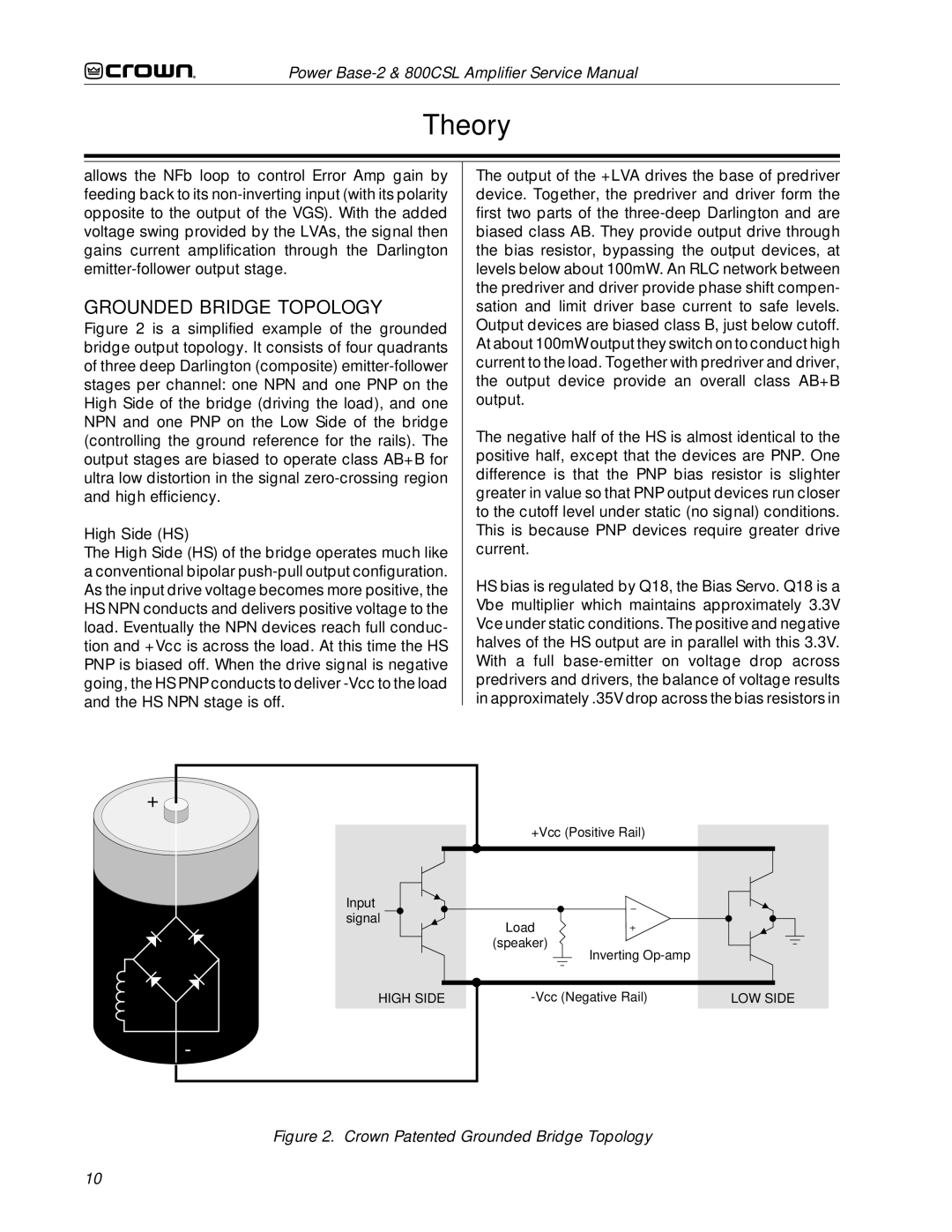800CSL specifications
Crown Audio has long been a respected name in professional audio equipment, and the 800CSL amplifiers are a testament to their unwavering commitment to quality and performance. Designed for professional sound reinforcement applications, the Crown 800CSL offers an impressive blend of power, reliability, and versatility, making it a popular choice among audio engineers and event coordinators.At the heart of the Crown 800CSL is its robust power output. This amplifier delivers an impressive 800 watts per channel at 4 ohms, ensuring that it can drive even the most demanding speakers with ease. It features a Class D design, which not only maximizes efficiency, allowing for more power with less heat generation, but also contributes to a lightweight chassis that is easy to transport and install. This makes the 800CSL a versatile option for both permanent installations and mobile events.
One of the key technologies employed in the Crown 800CSL is its comprehensive built-in protection circuitry. This includes advanced short circuit protection, over-temperature protection, and current limiting. Such features ensure that the amplifier operates reliably in challenging conditions, reducing the risk of damage to both the amplifier and the connected speakers. The inclusion of a low-frequency filter further enhances performance, providing clean, powerful bass without distortion.
The Crown 800CSL also offers a range of connectivity options, including XLR and ¼-inch inputs, making it compatible with a wide variety of audio sources. This flexibility, combined with user-friendly front panel controls, allows audio professionals to set up and adjust the system quickly and efficiently.
Additionally, the amplifier features a robust and compact design with a lightweight aluminum chassis. This not only contributes to its portability but also aids in heat dissipation, further enhancing performance during prolonged use. The included handles on the chassis make it easy to transport the unit between gigs, while its durable components ensure longevity.
In summary, the Crown Audio 800CSL stands out for its power, efficiency, and reliability. From its Class D amplification technology to its comprehensive protection features, this amplifier is designed to meet the needs of professionals in the audio industry. Whether for concerts, events, or installations, the 800CSL is poised to deliver exceptional sound quality and performance, making it a valuable addition to any audio toolkit.

